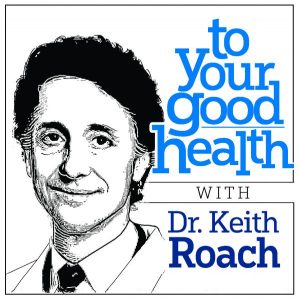GOOD HEALTH: Herbal product can help soothe gastro-intestinal symptoms
By Dr. Keith Roach — September 26, 2022 DEAR DR. ROACH: I have had gastroparesis for many years. About two years ago, it led to small intestinal bacterial overgrowth (which I once read about in your column). I worked with a dietician for several months. One of the treatments she suggested was an herbal product called Iberogast. The combination of herbs helps the stomach to empty quicker. I use it each night before bed (as part of a 12-hour fast), or whenever I have overeaten and feel bad. It has been most helpful for me. Iberogast is available online. — L.E.
DEAR DR. ROACH: I have had gastroparesis for many years. About two years ago, it led to small intestinal bacterial overgrowth (which I once read about in your column). I worked with a dietician for several months. One of the treatments she suggested was an herbal product called Iberogast. The combination of herbs helps the stomach to empty quicker. I use it each night before bed (as part of a 12-hour fast), or whenever I have overeaten and feel bad. It has been most helpful for me. Iberogast is available online. — L.E.
ANSWER: Iberogast is a combination of nine medicinal plant extracts. Studies in Germany and Austria, where it is most commonly used, have shown the medication to be more effective than the placebo (and about as effective as one common prescription medication) in the treatment of functional dyspepsia and irritable bowel disease. The medication has generally been regarded as safe, but there are rare cases of liver injury associated with this medication, with at least one of which eventually requiring a liver transplantation.
All medications — whether prescription or over-the-counter, natural or synthetic — have the potential for harm. Iberogast is pretty safe, with just a handful of bad outcomes in its 50 years of use, involving millions of doses, but it can still cause rare and severe adverse effects. Iberogast is worth considering in people whose symptoms have not been successfully treated with other therapies.
***
DEAR DR. ROACH: I’ve heard a lot about fat-removing procedures, such as CoolSculpting and red light therapy, and I’m wondering if they really work. What is your opinion on these products? — Anon.
ANSWER: The most important point here is that these are procedures designed to improve a person’s appearance, and they do little or nothing to improve physical health. They do not cause people to lose significant weight, and removal of the superficial fat right below the skin does not improve diabetes or heart risk factors. The benefits are purely cosmetic.
CoolSculpting is the brand name of a system that freezes and damages fat cells. Red light therapy, also called “cool laser” or “low-level laser therapy,” damages the fat cells without having to make incisions, such as for liposuction. There are other technologies used, such as focused ultrasound and electrical pulse devices, among others.
Trials on CoolSculpting showed that 86 percent of people saw improvement in cosmetically important areas. The laser treatment is not as well-studied. An early trial found that 70 percent of people treated with laser were satisfied, compared to 26 percent of those treated with a “sham” device that had no laser, just red lights. The device did show some slimming effects on the hips, thighs and waist.
Unfortunately, not everyone has a good response to these therapies. Several people, including a famous model, have sued the manufacturers due to an uncommon adverse effect of the procedure, called paradoxical adipose hyperplasia, where the fat cells, instead of dying, grow and become hard — and may not even be removable with surgery. Again, these noninvasive procedures really do work to improve appearance for most people, but do not improve overall health. And, they have the potential for significant cosmetic side effects, even if it is only rarely.
Dr. Roach regrets that he is unable to answer individual questions, but will incorporate them in the column whenever possible. Readers may email questions to ToYourGoodHealth@med.cornell.edu.
© 2022 North America Synd., Inc.
All Rights Reserved



